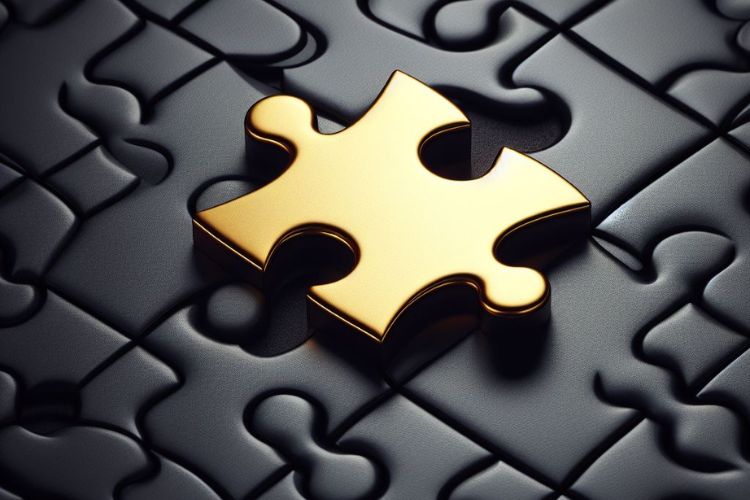Leadership is a tapestry woven with values that shape decisions and entire cultures. These are the beliefs, principles, and standards that guide a person’s actions, thought processes, and interactions with others. They shape the morals and character of leaders and influence their approach to managing people.
|
Author: Aaron Ngui |
What are Leadership Values?
Leadership values (also referred to as leadership qualities/ characteristics) are deeply ingrained beliefs that form an integral part of a leader’s identity. They represent what the person stands for and believes in at a fundamental level. As such, these core beliefs influence their mindset, attitude, and the way they relate to others.
One good example is to believe in the human potential for greatness. When leaders hold to the belief that everyone has the potential to excel, they give people the opportunity to shine. Those who know how to appreciate the good in others treasure the gifts each team member brings to the table. They would want to tap on those gifts to take the team to higher performance.
This belief in the human potential for greatness is a habit of mind. The more leaders believe in the potential of others, the more people will give them a reason to have faith.

Why are Values Important in Leadership?
-
Guiding Principles
One reason why values matter in leadership is that they serve as guiding principles that shape how leaders approach various situations. Such characteristics provide a framework to assess options, make decisions, and set priorities.
For example, a person who places a strong emphasis on integrity prioritizes honesty and transparency in what they do, even during difficult circumstances.
-
Core Beliefs and Identity
A major portion of a leader’s identity is made up of deeply ingrained beliefs – which are shaped by a combination of personal experiences, upbringing, education, and exposure to diverse perspectives. These core beliefs influence the mindset, attitude, and how they relate to people.
The culture of an organization or team is greatly influenced by the values of the leader. One who consistently demonstrates and upholds certain core qualities sends a clear message about what is expected from team members.
For instance, by involving everyone in the decision-making process and giving them the chance to voice their own opinions, you essentially contribute to promoting a culture of diversity within the organization.
Leaders who take on the values of their organization are in a good position to align with the overall goals and mission. These ensure decisions and actions contribute to achieving the business’ long-term results.
- Building Trust
People who are consistently living their values build trust and credibility with others. Leaders foster an environment of trust and reliability when team members see that they consistently live by their stated qualities. This will strengthen the person’s influence and effectiveness as team members trust them to make the correct decisions.
- Decision-Making
Leadership values serve as a compass for decision-making. When faced with complex choices, leaders can refer to them to help determine the best course of action. This ensures that decisions are aligned with the leader’s moral compass, and the organization’s vision and direction.
- Demonstration through Actions
Leadership values are not just about words; they are exemplified through actions. A leader’s behavior, choices, and interactions with others should consistently reflect the ethics they espouse. This authenticity reinforces the person’s credibility and sets a positive example for the team.
When leaders live by their values consistently, they build trust, inspire their teams, and contribute to the overall success of their organization.
10 Essential Leadership Values
Here, we have compiled a list of 10 essential qualities that all leaders should strive to acquire for sustainable long-term success.
-
Integrity
Becoming a leader is synonymous with becoming yourself. It is precisely that simple and it is also that difficult.
Warren G. Bennis
Integrity can be thought of as the bedrock of leadership. It encompasses courageous honesty, transparency, and moral steadfastness. Those who exhibit this quality are like beacons who people can turn to for truth and reliability.
A leader with integrity is consistent in their actions. They display a high level of ethical conduct, whether personal or professional. This inspires confidence in their team members who know such leaders would do what is right, even when the circumstances are challenging.
Example:
Ben is faced with a tempting but ethically questionable deal. If the deal goes through, his commission pays for his holiday in the Bahamas. But, his reputation as a person of integrity will take a massive low. Not only that, the organization’s name may also be dragged into the mud. Placing his and the company’s long-term reputation over short-term gains, he decides to walk away.

-
Respect
Real leadership is leaders recognizing that they serve the people that they lead.
Pete Hoekstra
Respect forms the foundation of healthy relationships within any organization. It entails treating others with dignity, empathy, and consideration. The opposite of respect is scorn, which is one of the three hurdles that leaders need to overcome to transform team turbulence into thriving teams.
A respectful leader respects the perspectives and contributions of each team member. They demonstrate this value by actively listening to opinions, providing constructive feedback, and acknowledging achievements. This goes a long way to create a positive work environment where everyone feels valued and heard.
Example:
Sam is the director of a non-governmental organization (NGO) addressing issues in education. Leading a multinational team, he recognizes that everyone brings something to the table. During meetings, he makes sure everyone has their say and ensures they feel heard. The respect he shows to the team is felt by all as he recognizes that each person brings their own unique set of skills and capabilities.

-
Trustworthiness
If you think you are leading and turn around to see no one following you, then you are just taking a walk.
John C. Maxwell
Trust is the cornerstone of effective leadership. It’s the confidence that team members have in their leader’s reliability, consistency, and honesty.
Trustworthiness is established through actions, not just words. A leader builds trust by following through on commitments, being consistent in their behavior, and maintaining confidentiality when necessary. They are a reliable source of support and guidance.
Example:
Alice is the head matron of a large hospital. She means what she says and says what she means. She takes her job in healthcare very seriously and although kind, would not hesitate to be honest with her team when standards slip. Even so, the team trusts her as she holds herself to the high standards she expects from others. She makes sure that those in her team strictly follow procedures but also ensures they have the resources they need to provide excellent treatment to the patients.

-
Accountability
Leadership is an action, not a position.
Donald McGannon
Accountability is the willingness of an individual to take responsibility for his or her own actions and decisions. This leadership value is about owning both successes and failures. Those who are accountable do not shirk from the results; they seek to discover what could have been done better, rather than shifting blame to others.
A leader who embraces accountability sets a powerful example for their team. They acknowledge mistakes, learn from them, and work towards solutions. Doing so fosters a culture of continuous improvement. They admit when an error has been made and will take the necessary steps to rectify the situation.
Example:
For James, who coaches a semi-professional football team, he takes accountability for every loss the team suffers. Instead of wallowing in self-pity, he acknowledges that his tactics may have been effective, that the preparation was not thorough enough, or that there are certain skills/ areas that need improvement. Whatever the cause may be, he is not one to blame everyone except himself. James dedicates his time and energy to working with the players to develop future successes.

Read more: 5Cs of Effective Accountability Partners
-
Empathy
Before you are a leader, success is all about growing yourself. When you become a leader, success is all about growing others.
Jack Welch
Leaders who have empathy understand and share the feelings and perspectives of others. This is a crucial trait to foster strong relationships. When people feel understood, positivity in the work environment increases.
An empathetic leader actively listens to team members, acknowledges their emotions, and provides support when needed. The result is increased collaboration and productivity as people feel they can trust each other.
Example:
This is what Jane, the manager of a shoe shop at a shopping complex, shows to her team member who is experiencing terrible morning sickness. As a mother, she knows what the individual is going through and empathizes with her. To accommodate the person, Jane puts her on the afternoon shift when the symptoms are fewer.
Read more: Love Leadership – More Than an Abstract Philosophical Idea

-
Vision
A leader is one who knows the way, goes the way, and shows the way.
How do leaders drive their people? One way to do so is to have a vision – which is the ability to see and articulate a clear, compelling future for the organization. This moves people as leaders provide the direction and purpose for the organization.
Leaders with vision set long-term goals and communicate these goals effectively. They do their best to ensure every member understands the role they play in achieving the shared vision. This creates a sense of purpose and unity. The sense of clarity empowers team members to work towards a common goal.
Example:
Although only in her early 20s, Jeni has a vision of a greener and environmentally friendly future. By inspiring others to live an eco-friendly lifestyle, she has got many people to change their consumption habits to reduce waste. She has also rallied volunteers and local businesses around initiatives to implement recycling programs. In addition, Jeni organizes quarterly beach clean-ups where hundreds of volunteers gather up the trash from beaches for recycling or proper disposal.

-
Courage
Management is doing things right; leadership is doing the right things.
Peter Drucker
Courageous leaders are those who do not shy away from making tough decisions. They take calculated risks and confront challenges and issues head-on. Even though some actions may take them out of their comfort zone, they still do what needs to be done for the benefit of the team and the organization.
Leaders who are courageous address difficult situations with confidence and conviction. This inspires the team to follow suit. By doing so, the team fosters a culture of resilience as they face adversity together.
Example:
In the book 5 Levels of Mastery, the authors recount the story of John, the manager of a music store. He was dealing with difficult team members who were poorly disciplined. He was initially reluctant to act. But, after coaching and realizing the status quo harmed the team, he made the courageous decision to utilize his authority. Those affected were none too happy. Some left, some transferred elsewhere but those that remained were happier and more productive.

-
Flexibility
The role of leadership is to transform the complex situation into small pieces and prioritize them.
Carlos Ghosn
Flexibility is the capacity to respond effectively to change. The world today is rapidly evolving and today’s leaders have to face a myriad of challenges. As a result, they should be flexible and open-minded to course-correct when confronting shifting circumstances.
A flexible person embraces change as an opportunity for growth. They thrive on challenges and flexibility to stretch and grow for higher accomplishments. When leaders are flexible, they encourage their team members to be agile and open to new ideas. This enables the organization to remain competitive and resilient. This ability to pivot in response to new information or circumstances is vital crucial sustained success.
Example:
Basil, a hospital IT administrator is constantly navigating the challenges of implementing new medical technology and ensuring medical staff are well-trained to use the devices. The training should not negatively impact patient care or operations. He needs to ensure a smooth transition for staff.
Read more: Agility Coaching – Navigating Change & Fueling Business Success

-
Humility
A man who wants to lead the orchestra must turn his back on the crowd.
Max Lucado
Humility is about recognizing one’s own limitations and valuing the contributions of others. This leadership value is essential for building collaborative and high-performing teams.
Leaders who are humble do not let their position go to their heads and feed their egos. They acknowledge their team’s expertise and actively seek input, creating an inclusive and empowered work environment. By embracing humility, they foster a culture of mutual respect and continuous learning.
Example:
Olive is the lead researcher for a scientific study. However, she acknowledges she does not know everything there is to know on the subject. She actively seeks feedback and ideas from team members. Her humility lets her recognize that collective expertise leads to more robust and innovative research outcomes.
Read more: Ego in the Workplace – The Hidden ‘Evil’ Behind Team Dysfunctions

-
Inclusivity
A boss has the title, the leader has the people.
Simon Sinek
An inclusive leader is one who makes all team members feel valued and part of the team. They do this by promoting diversity and ensuring everyone has an equal opportunity to contribute – thereby fostering a culture where different perspectives are welcomed and celebrated. They seek out voices that may be underrepresented and amplify them. This creates a rich and dynamic environment where a variety of viewpoints can give rise to more innovative and effective solutions.
Read more: Leader vs Boss – 11 Key Differences (Which One Are You?)

How to Exhibit Leadership Essentials and Core Values
Exhibiting your leadership values is crucial for inspiring and motivating others, building trust, and fostering a positive work environment. Here are some effective steps you can take to demonstrate such qualities:
- Identify your core values as a leader
Look into yourself to figure out the principles that guide your decisions/ actions, and reflect on what matters most to you/ what you stand for. Self-reflection, feedback, 360-degree assessment. etc. are all powerful tools to help uncover them.
- Communicate with your team and stakeholders
Your core values aren’t meant to be hidden treasures; they’re the beacons that illuminate your professional path. As such, make sure to communicate them to your team and stakeholders through various channels – meetings, emails, presentations – and use tactics such as storytelling to bring them to life.
Read more: Stakeholder Management – A Leader’s Engagement Playbook

- Align your actions/ decisions with your values
Consistency is key to building trust and credibility. Ensure your actions and decisions are aligned with the aforementioned principles – by utilizing tools such as goal setting, planning, and feedback.
- Inspire others to follow you
Leadership isn’t about dictating; it’s about igniting a shared passion. Hence, your job as a leader is to empower the team to embrace your principles – by fostering a culture of open communication and encouraging them to take the lead whenever possible. You can deploy various techniques for this purpose – including coaching, mentoring, recognition, rewards, etc.
Read more: Coaching vs Mentoring – Define the Differences
Actions always speak louder than words. In other to exhibit your essentials effectively, you have to become a role model that everyone looks up to. Be accountable and respect others – so that they understand the true meaning of leadership.
- Continuously reflect and improve
Leadership is a constant evolution. Reflect on your actions regularly, seeking feedback and identifying areas for improvement. This commitment to personal growth will become the cornerstone that elevates your leadership to new heights.
Read more: Self Leadership – The Art of Leading from Within
Guide to thoughtful leadership
Leadership Values Exercises
- Melodies of values: This is a fun and creative way of exploring oneself through music. Invite team members to choose a song representing one of their core values and share it with the group. Then, encourage them to explain their song choice, its personal significance, and its connection to their work.
- Painting a collective vision: A collaborative exercise to help unleash your team’s creativity to visualize shared values. First, provide a large canvas, paints, and other art supplies. Then, encourage others to create a collaborative painting reflecting their collective values. After that, invite them to explain their choices of colors, shapes, and symbols and how they represent their beliefs.
- Storytelling and shared values: With this exercise, you invite team members to share stories of times they experienced or demonstrated a company value in their work. Encourage them to reflect on the story’s impact, lessons learned, and how it influenced their actions.
- Interactive values showcase: Online platforms like Miro or Mural may be used to create an interactive board or canvas displaying your team’s qualities. Enhance it with images, videos, links, and notes for better illustration.
Read more: Creative Leadership – Trigger Innovative Approaches for Results
Leadership Values Activities
- Values card sort: Create a set of cards with different values written on them. Have participants sort the cards into three piles: “essential,” “important,” and “not important.” Then have them discuss why they sorted the cards the way they did.
- Values collage: Provide participants with magazines, scissors, glue, and poster board. Have them create a collage that represents their core leadership values. Then, ask them to present their choices to the group.
- Values walk: Take participants on a walk around the office or neighborhood. Have them choose things that represent their core leadership values. For example, one might identify a tree as representing the value of growth.
- Values interview: Have team members interview each other about their core leadership values, and then share what they learned about each other with the group.
- Values in action: With this activity, participants should share examples of times when they have lived their core values – before discussing how their actions made a difference.
Read more: Leadership Philosophy – How to Define Your True North & Follow It

Leadership Values Quotes
The greatest leader is not necessarily the one who does the greatest things. He is the one that gets the people to do the greatest things.
Ronald Reagan
If your actions inspire others to dream more, learn more, do more and become more, you are a leader.
John Quincy Adams
A true leader has the confidence to stand alone, the courage to make tough decisions, and the compassion to listen to the needs of others.
Douglas MacArthur
Leadership is not about titles, positions, or flowcharts. It is about one life influencing another.
John C. Maxwell
The task of the leader is to get their people from where they are to where they have not been.
Henry Kissinger
A leader is one who sees more than others see, who sees farther than others see, and who sees before others see.
Leroy Eimes
Leadership is the capacity to translate vision into reality.
Warren G. Bennis
Whoever would be great among you must be your servant.
Matthew 20:26–28
Strengthen Your Leadership Values with ITD World’s Training Solutions
In today’s dynamic and competitive business landscape, organizations are in dire need of leaders who can inspire, motivate, and guide their teams to achieve organizational goals while navigating the complexities of the modern world.
At ITD World, we offer a comprehensive suite of training programs designed to address the above-mentioned challenge. Our flagship program, the Certified Master of Leadership (CML), is a world-class leadership certification course that equips participants with the essential skills and knowledge to excel as leaders.
The CML program goes beyond traditional training methods by incorporating cutting-edge learning from the world’s greatest leadership experts. It utilizes a synergistic approach that combines consulting, assessment, training, coaching, mentoring, experiential action learning, and management review to provide a holistic and transformative experience.
In addition to the CML program, we also provide a variety of professional competency certification courses and in-house training programs tailored to the specific needs of organizations. Our solutions are designed to address the unique challenges and opportunities faced by different industries, company cultures, and leadership levels.
With our team of trainers’ proven expertise and comprehensive approach, we are confident in our ability to elevate your organization’s performance to new heights!
Final Thoughts
The aforementioned 10 leadership values provide a robust foundation for exceptional results. Those who practice these qualities are equipped to build the base for high performance, inspire their teams, foster positive work environments, and drive results.
Having values shows that leadership is not about having all the answers but striving to be the best version they can be. Incorporating them into your daily routine can positively impact morale, productivity, and overall success. People who cultivate these qualities become more impactful and respected as a leader.
Other resources you might be interested in:
- Executive Leadership: A Guide to Developing Tomorrow’s Titans
- Weak Leadership: How It Undermines Success
- Performance Coaching Explained: Unlock People’s Greatness
- Coaching Principles for Breakthrough Success
- Human Resource Management: Key Foundations & Best Practices


